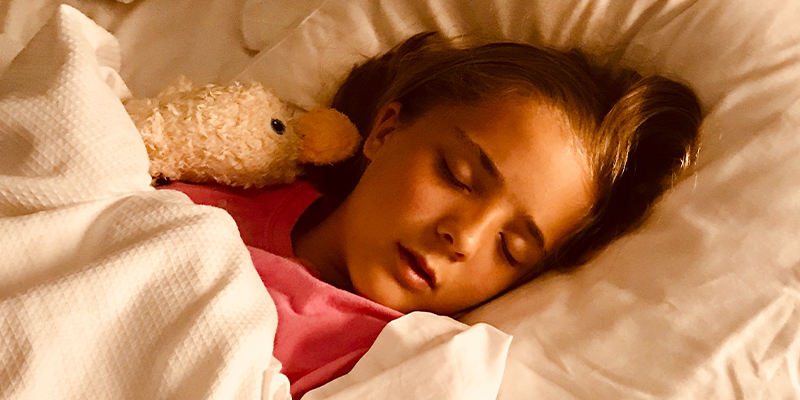
Obstructive sleep apnea can affect anyone from children to adults; however, they are slightly different from one another. If you are thinking that your child may be suffering from sleep apnea, there are some things you should know such as what causes it and what symptoms to look out for. If you are interested in learning more about pediatric sleep apnea, continue reading.
What Causes Pediatric Sleep Apnea?
The muscles in our head and neck help keep the upper airway open and when children fall asleep, this muscle relaxes which allows the tissues to fold closer together. If the airway is slightly closed already while they are awake, when they fall asleep it will make the airway close completely. In children, the most common cause for this is either enlarged tonsils or adenoids which are located in the back and on either side of the throat. They may either grow too large or might swell due to an infection. Sleep apnea can be caused for a few other reasons as well including being overweight, a tumor or growth in the airway or certain syndromes or birth defects such as Down syndrome and Pierre-Robin syndrome.
What Are the Symptoms of Pediatric Sleep Apnea?
There are several symptoms to look out for when trying to decide if your child has sleep apnea or not. Those symptoms can include loud snoring or breathing, gasping or snorting, pauses in breathing, mouth breathing, restlessness while sleeping and too much daytime sleepiness or irritability. Other symptoms of sleep apnea in children are hypoactivity during the day, behavioral problems, learning problems, bedwetting and sleepwalking. These symptoms can be similar to that of other health conditions so make sure you get it diagnosed by a health professional.
How Is Pediatric Sleep Apnea Diagnosed?
To get your child’s sleep apnea diagnosed, a healthcare professional will ask you several questions about their symptoms and sleep patterns. They may also recommend that your child has a sleep test done. Although a sleep test is the best way to diagnose sleep apnea, it may be difficult to do with a younger child, especially if they do not like to cooperate. During this study, your child may need to sleep in a special lab and be connected to monitors so that professionals can record their brain activity, electrical activity of the heart, oxygen levels and carbon dioxide content in their blood as well as their muscle activity, movement of the chest and abdominal wall and the amount of air flowing through their nose and mouth.
How Is Pediatric Sleep Apnea Treated?
When sleep apnea is mild in a child, doctors will just check on their symptoms from time to time to make sure they are not improving before deciding on further treatment. Treatment for their sleep apnea can include removing their tonsils or adenoids if they are too large, losing weight or getting a CPAP machine to use at night along with a plethora of other options.
You can help your child get the treatment they need by knowing what to look out for and what to do to prevent it. Here at LifeTech, we can provide you with more information so contact us today if you are interested in learning more about pediatric sleep apnea.
November 5, 2021 by Life Tech
Obstructive sleep apnea can affect anyone from children to adults; however, they are slightly different from one another. If you are thinking that your child may be suffering from sleep apnea, there are some things you should know such as what causes it and...